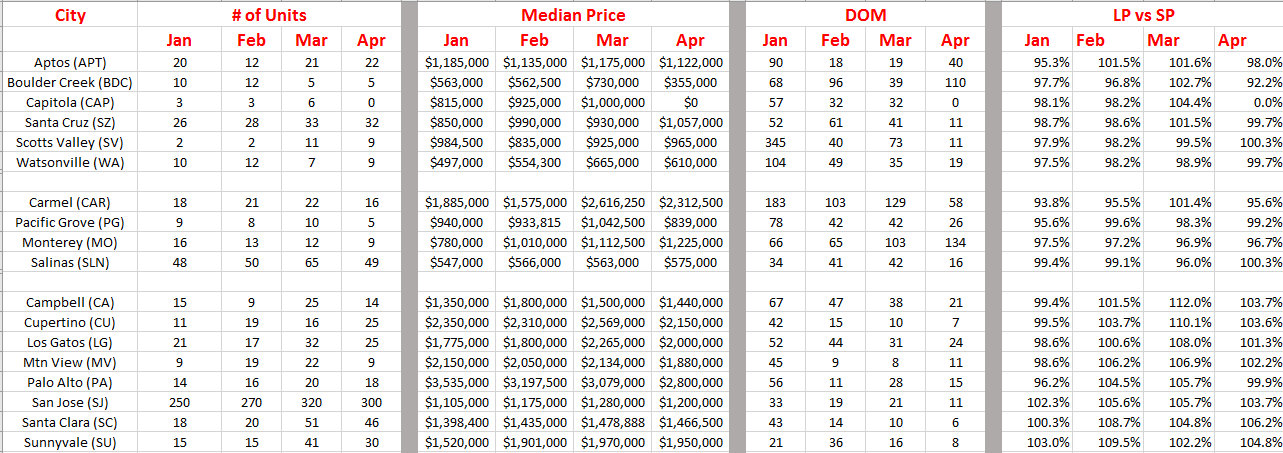May 2020
How to determine prices in a post-Covid-19 Market
As the states begin lifting stay-at-home orders, how will prices from the pre-COVID-19 market compare to those post-COVID-19 market? Supply and demand drives price. Before COVID-19, we were facing a serious housing shortage. What no one knows is whether these factors will drive the post-COVID-19 market into a full-blown downturn.
1. Increased unemployment, divorce, business losses or people being forced to downsize due to loss of income.
2. Lack of jumbo financing, especially if this situation continues for any length of time.
3. A much smaller foreign buyer market due to border closings, international lockdowns, economic losses, and limited legal immigration to the U.S.
4. Limited access to home equity (HELOC) loans due to lenders temporarily suspending these programs.
5. An increased number of distressed property owners. However, this number may be mitigated if a large percentage of consumers take advantage of lender forbearance programs.
6. Investors liquidating properties due to nonpayment of rents coupled with "do not evic" orders.
Covid-19 suppresses spring home buying season in California
 While home sales actually rose on an unadjusted basis in all California regions from February to March, the pandemic has suppressed the start of the spring home buying season. March typically sees a larger uptick than was observed this year, causing existing home sales to fall on a seasonally adjusted basis by 11.5 percent. Thus far, the pandemic has had only a modest effect on home prices.
While home sales actually rose on an unadjusted basis in all California regions from February to March, the pandemic has suppressed the start of the spring home buying season. March typically sees a larger uptick than was observed this year, causing existing home sales to fall on a seasonally adjusted basis by 11.5 percent. Thus far, the pandemic has had only a modest effect on home prices.
While statewide listings and pending sales are declining, the rates of decline have not been as steep as in weeks past. Southern California and the Central Valley even experienced their first increases in the number of new listings since C.A.R. began tracking daily data in early March, and the Bay Area has seen two consecutive weeks of increases as of April 28th.
National new housing starts tumbled by 23.3 percent in March, the biggest drop in nearly 40 years. In a survey from the National Association of Home Builders, 90 percent of respondents reported a slowdown in remodel inquiries and customers' willingness to proceed with a remodel.
What buyers want today
When a buyer evaluates a home's selling potential, they likely check out the neighborhood, schools and home features and condition. But what about walkability, local grocery stores, beer pubs, views, etc.?
Your professionals today buying their first home may be single or coupled, but they often have a few common features in mind. They want proximity to their favorite night spots, gyms, and other amenities. They are ready for a transition, but they do not want to be as suburban as their parents.
Buyers with young children or planning on them, want proximity to schools, parks, community centers, daycare, and similar neighborhood features.
Affluent buyers who can afford their dream home are searching for move in ready. They are not looking for renovation, but rather updated kitchens and baths. Those with older children may want good schools and summer activity options. Downsizers want to simplify. They are searching for smaller, maintenance free or built-in communities.
Where do you fit in?
80% of Buyers have had timeline interrupted by COVID-19
Many consumers are lowering their targeted price point in case another pandemic comes, according to a survey by real state technology company OJO Labs. COVID-19 has had an unmistakable impact on the housing market, slowing transaction volume nationwide.
The study found that 80 percent of homebuyers planning to purchase in the next six months have had their timeline delayed or halted altogether because their financial future is so uncertain in the wake of COVID-19.
The survey found that 60% of first-time buyers cited concerns over future employment prospects and 54% cited an inability to see homes in person as the reason for delays. Even with the inability to see homes, there are not a lot of homes hitting the market, as new listings are down 28% from March peaks.
Even if buyers found a few viable options, they cannot go see them because it is uncertain as to what's allowed in 'shelter in place' markets and relying on virtual tours and photos for a purchase this large is simply too risky.
Price is the key, in general, with many lowering their target price range in case of another pandemic or recession. Buyers want to be able to afford their home if this happens again. Buyers are making sure they can afford the homes they are currently looking at, and some are even lowering their price maximum so that they feel confident they can weather any future uncertainty.
Year-to-Date Comparisons for the Bay Area, Central Coast & Santa Cruz
Comments: What a difference a Pandemic makes! Overall total sales declined in these areas 13% although a greater decline of 25% in Monterey County. Interesting note as there were no sales in Capitola. The median price in Santa Cruz County decreased by 24%, by 7% in Monterey County and by 8.5% in Santa Clara County. Days on the market decreased again in most areas but more so in Santa Clara County as one might expect. Accordingly, the list to sale price ratio increased across all three counties most likely still driven by the lack of inventory. Display of MLS data is deemed reliable but is not guaranteed accurate by the MLS.


